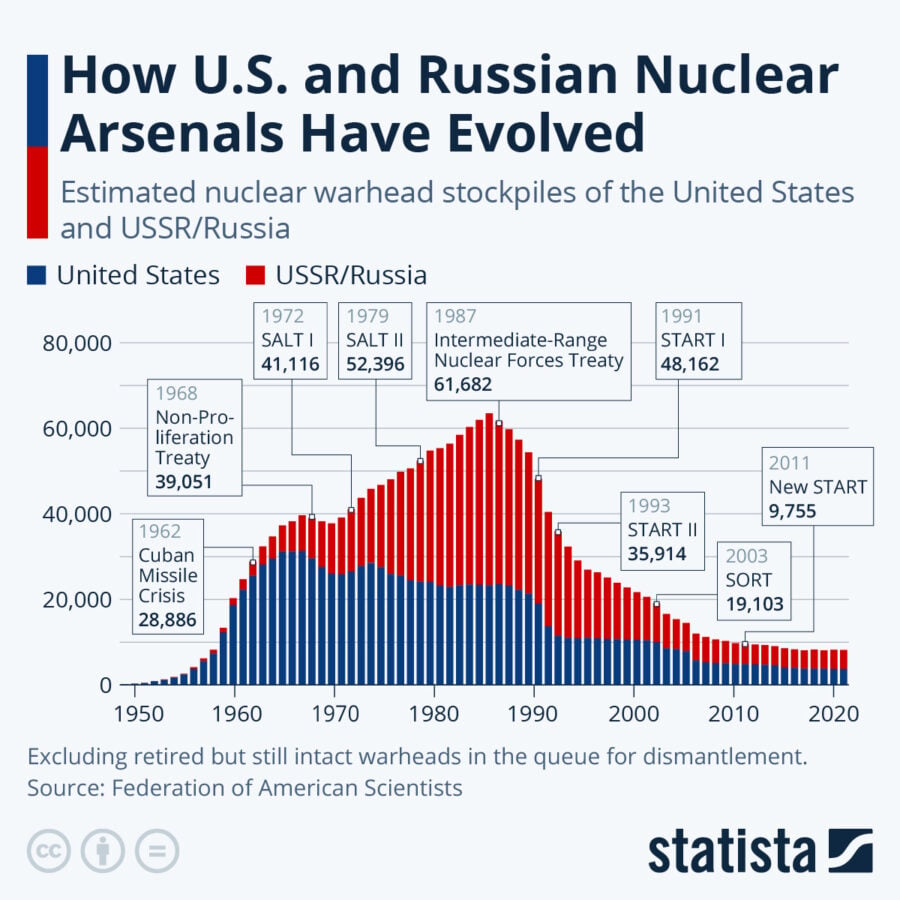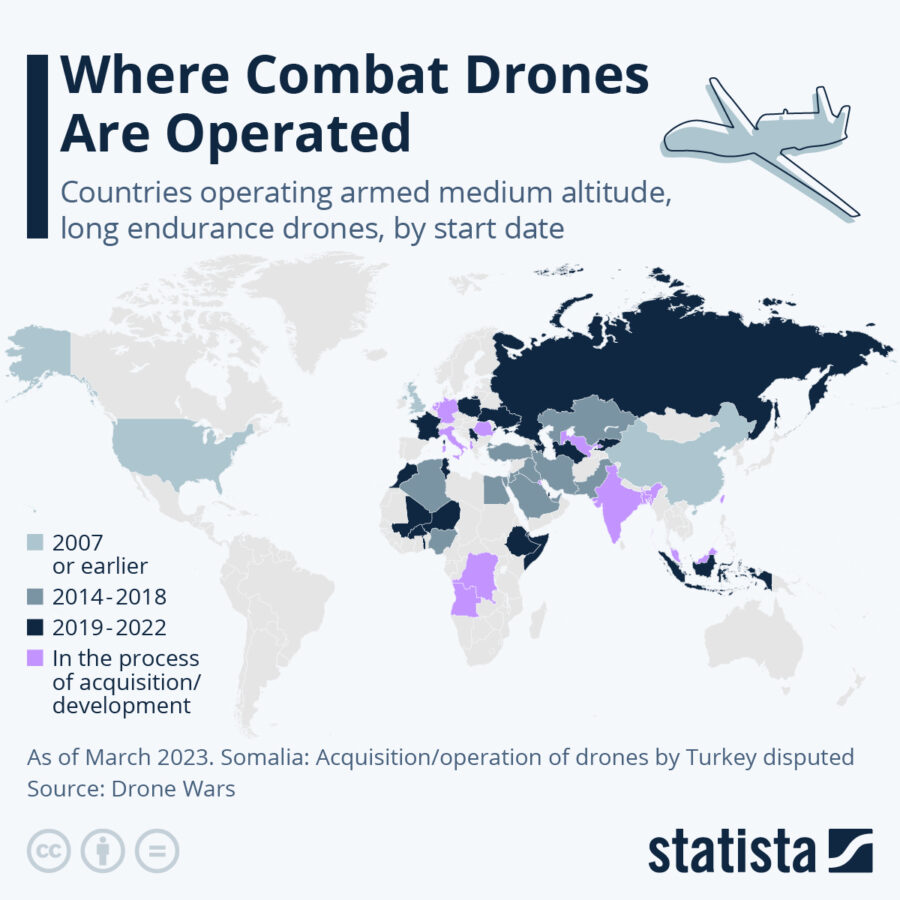Sadia Iqbal is an MPhil candidate and a researcher interested in global geopolitical issues. She is also a gold medalist in the 2020 MA batch of Punjab University.
Military technology has long remained a cornerstone of scientific progress, social development, political policy-making, and warfare. Military technologies have neither remained limited to their military field nor remained limited to our conventional understanding of “military” needs. Additionally, various apparently “civilian” technologies are also occasionally used for military purposes, making technology a constant factor in military planning and strategy.
Historical Evolution of Warfare
From limited early wars and conflicts, warfare evolved into the large-scale organized multi-disciplinary field that we know today. The process not only required major political changes and administrative developments but, most of all, depended on the evolution and adaptation of technologies over time. In early military strategies, the handheld tools used by the combatants were of primary importance. This included, primarily, the sword. The broad sword was heavy and armor-piercing, while the light swords of the Arabs and Asians were made for quick and repeated blows.
The use of animals, such as the fast-moving horses of the Mongol hordes and the slow but more indestructible elephants of the Mughals, was another major factor. A major technological shift was the use of sea-faring vessels for combat. While the technology for navigation did not directly come from military needs, the ability to transport armies and attack via sea became a major military tool in recent colonial history. This was a good example of civilian technology being employed for military purposes and completely changing military tactics in return.
The introduction of gunpowder to large-scale military activity completely introduced a new form of waging war: war from a distance. Gunpowder gave such a decisive advantage to colonial armies that soon all primitive mechanisms of warfare were overcome by this new technology, and subsequent conflicts adapted to this technology. In due course, the introduction of rockets, airpower, submarines, and tanks all influenced modern wars in their own ways. The important element is to observe that technology influences warfare just like it influences any other field of human life and enterprise.
Determinants of Adaptability
It is fundamental to notice that not all technologies are suitable for all states to use. The adaptability of a technology to any state’s war plan depends on several factors.
- Nature of Threat Perception by a State
In the international arena, perception is a process of reading an action and environment through an actor’s own analysis. A threat, on the other hand, can be defined as a situation in which one state has the potential or intention to hurt another state. These threats may be posed either by verbal or physical means. States and actors see a rise in their threat perception when they witness changes in the balance of power (BOP) and the readjustment of their security dilemma. Based on these threat perceptions, states acquire technology and modify their security models according to the perceptions they sense from their rival states.
Take Pakistan, for example. It has laid out clearly that India remains its only security preoccupation. Hence, Pakistan has neither pursued weaponization of outer space nor developed long-range naval power through aircraft carriers, as these technologies are more suitable for larger global military campaigns. Similarly, the Soviets developed nuclear weapons in response to the US acquisition of the technology.

- The Attitude Adopted by a State to Certain Technologies & Policies
The adoption of specific technologies and designs of militaries is unique to most countries, depending on their doctrine, strategic culture, and objectives. An example of this is Israel, which prioritizes the security of its forces’ personnel to the point that it uses slow tanks that are heavily armored. Similarly, Pakistan has never pursued a biological warfare policy on principle grounds as it opposes biological warfare, whereas Iraq and Syria, having dictatorships oblivious to human rights considerations, have pursued and used biological weapons. Hence, a state’s attitude toward and priority for certain values is also a determinant of whether it will adopt certain technologies or not.
- Economic Potential of a State
While every state wishes to fortify its military capability with the latest technology, the economic ability to procure, maintain, or develop advanced technologies remains a key constraint.
Modern Technologies
Now that we have seen the close relationship between technology and warfare, we should observe some of the leading modern technologies that are impacting warfare. One of the main lessons of the twenty-first century is that everything is weaponizable. Information, media, data, and the economy have all become tools in the arsenal of modern states.
While coercive power is exercised through selective application of human rights, international law, trading agreements, and manipulation of international institutions such as the UN, IMF, World Bank, WTO, etc., it remains important to distinguish political coercion from active military activity. The above-stated coercive measures give negotiating leverage to states, while modern weapons of data, information, and media are actually weapons of active use by militaries globally. It is, at the same time, important to observe the new technologies that are impacting modern warfare.
Internet/Data
It is interesting to note that the Internet was primarily created as a military project to connect military resources with academic work. This is the latest “weapon” for modern warfare. Data and its processing have been militarized by modern techniques of “big data” to create internal social debates, predict states’ behaviors, and even influence them by targeting social media messaging.
In his 2018 election campaign, Narendra Modi weaponized the internet for political gain/interest. The creation of an election machine by Narendra Modi’s election team through the use of the internet, social media, and digital technologies marked the victory of the Indian prime minister.
Drone Technology
While unmanned aerial vehicles (UAVs) were used even during the Vietnam War, the refinement of technology has led to ease of use and advanced functionality from the latest drones. Drones today not only serve the purpose of surveillance, intelligence gathering, and reconnaissance but can even fire missiles and carry ballistic capabilities. Drones have been extensively deployed in the recent War on Terror, and the technology appears to have been crystallized as an important tool for modern militaries.
After the 9/11 attack, which subsequently led to the War on Terror, drone strikes were being used by the armed forces and the intelligence community. From 2001–2002, the USA drone strikes in Afghanistan and Yemen marked the beginning of the drone-oriented military operation. It can be seen as the beginning of an increasingly drone-oriented military operation. Lately, many actors and non-state actors have the ability to acquire the technology. The Center for the Study of Drones has reported that 113 states have military drone programs, and by 2024, the drone market will reach nearly USD 43 billion.

Missile Shield
Advanced multi-layered missile shields are the latest technology employed by advanced militaries to secure vital sites, such as military installations, national borders, and sensitive locations. The Patriot Missile Shield and the Terminal High Altitude Aerial Defense (THAAD) have shown high accuracy to completely destroy any incoming enemy projectiles (rockets, missiles, etc.) and provide a high level of security. For now, these systems are all US-deployed in various strategic locations around the world.
Hacking/Malware
Computer hacking has emerged as an important cutting-edge field for use by militaries. Hacking can completely incapacitate an enemy by shutting down its electronic response mechanisms; even aeroplanes and geo-location devices can be shut down or controlled. Hacking was used by Israel as a major attack to shut down Iran’s nuclear facility at Natanz in July 2021. Thousands of malware and cyberattacks are conducted every day across the world, targeting every conceivable military and sensitive location.
Research Areas
Some areas of advanced research include the deployment of lasers, special suits for soldiers with armor and firepower, robots employed as super soldiers, the use of outer space, and the weaponization of electronic devices. These are the emerging fields in modern warfare adapted from various civilian technologies.
Advantages of Employing Technology
The primary targets to be achieved by employing technology in warfare are:
- Increasing response speed
- Reducing the importance of distance by either increasing range or deploying closer to the target
- Using modern means of communication
- Increasing the security of personnel on the ground by reducing exposure (using drones) or increasing armor (using anti-ballistic shields in tanks)
- Enemy identification using facial recognition or target detection
For example, during the Gulf War, communication through digital data and the use of links between scouts and helicopters provided a quantum leap in systems integration and in the field of communication during warfare.
Conclusion
Technology has remained a key determinant in military confrontations. Military planning has evolved with available technology, and technology has evolved with military requirements. Aeroplanes were not designed as military tools but were most extensively used by militaries before becoming a large-scale commercial industry. The use of technology remains fundamental to advancing military interests and increasing security, mobility, timeliness, and the range of modern militaries.
If you want to submit your articles, research papers, and book reviews, please check the Submissions page.
The views and opinions expressed in this article/paper are the author’s own and do not necessarily reflect the editorial position of Paradigm Shift.


















